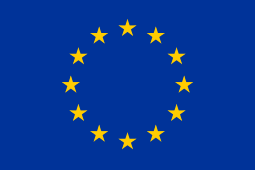Schools & Workshops
Thematic and tailored training schools, and industry workshops to educate young academic and industrial researchers on the broad basics, techniques and applications of synchrotron radiation
Providing support to SESAME in building its user communities primarily in the academic environment, but also to initiate actions to engage industrial users. Both present and future synchrotron users are targeted from the Middle East Region with special actions directed towards young researchers and emerging scientific communities.
THEMATIC TRAINING SCHOOLS
The first objective is to train Middle East researchers in priority areas identified by SESAME and who will benefit from the techniques that will become available with SESAME day-one beamlines.
A second objective is to foster the knowledge and initial hands-on training of young researchers of the Middle East Region in light source characterisation tools.
Cultural Heritage thematic school
The course includes the light source techniques themselves, but also the associated sample handling and ethical considerations:
- Specificities of synchrotron spectroscopy and imaging for the analysis of heritage materials: X-ray elemental composition and speciation, X-ray powder diffraction, FT-IR and UV/visible spectroscopy and imaging, micro-computed tomography (a possible future technique to be deployed at SESAME).
- Artefact and sample preparation: ethics and safety procedures, non-invasive characterisation, micro-sampling, preparation of cross sections.
- Examples of application of synchrotron techniques.
- Minimisation of radiation damage
Life science and IR Micro-Spectroscopy thematic school
The course covers a comprehensive training in infra-red spectroscopy and imaging:
- Principles of FTIR spectroscopy and imaging, data acquisition, sampling techniques: synchrotron radiation FTIR microscopy and imaging, spectral and spatial resolution; transmission, transflection, attenuated total reflectance, substrate choice and the use of microfluidic cells, biofluids analysis.
- Sample preparation: standard sample handling and preparation protocols prior to analysis, tissue cryo-sectioning, cell growth and deposition, and fixation protocols.
- Data analysis: quality control, spectral pre-processing and artefact correction, feature extraction and classification, univariate and multivariate approaches for data analysis and an introduction to the most common software applications for data handling.
Macromolecular Crystallography thematic school
The course components, building on prior experience, cover:
- Protein production, purification and crystallisation address production of soluble and membrane proteins, protein quality control and protein crystallisation and functional studies: high-throughput expression screening in bacterial, mammalian, insect and yeast systems, purification of soluble and integral membrane proteins, biophysical techniques for characterisation, designing and performing protein assays, crystallisation of soluble and membrane proteins, co-crystallisation and soaks with ligands, crystal imaging and scoring.
- Data collection on the beamline. Standard data collection procedures/protocols are explained in first phase. Additional lectures then address advanced data collection methods including microfocus beams for microcrystal data collection, sample humidity control, crystal reorientation to optimise data collection for anomalous diffraction data and low symmetry space groups, and X-ray fragment-based screening using compound library soaks.
- Data analysis, model building and structure refinement address diffraction data quality assessment, phase problem solution, and model building and refinement. Training covers the most commonly used protein crystallography software packages.
Environmental Sciences thematic school
The course includes the lectures dedicated to synchrotron techniques, but also to sample collection and handling as well as to data analyses and possible radiation damage effects:
- Sample collection and handling: Key issues regarding sample collection protocols are treated. Furthermore, the experiment planning and sample handling at synchrotron beamlines is important to ensure that the final analysis correlates well with the issues being investigated.
- Synchrotron techniques related to environmental sciences: Three main techniques are treated. 1) XAS is one of the most widespread and powerful techniques for applications in MES as it allows to address a key issue, namely the chemical state, or “speciation”, of contaminants. Furthermore, element-specific information can be obtained independently of the physical state of the sample (crystalline, amorphous or liquid). 2) XRPD allows an easier detection of minor crystalline phases in a mixture, and therefore makes possible the quantitative characterisation of complex multiphase samples, with asbestos studies being a textbook example. 3) Microbeam techniques allow access to spatially resolved information even below the micrometre scale. Micro-XAS, micro-XRF and micro-XRD techniques are being used increasingly in MES studies. Element maps (including speciation) are used to map key elements in a wide range of important samples such as roots, plants and rocks. The spatial distribution of contaminants or hazardous elements is key to understand their transport in soil and accumulation in plants.
- Data analysis: After the synchrotron experiment is carried out, data treatment usually comprise two steps: data processing (at the beamline) and data analysis (both initially at the beamline and later at the home institution). Data processing issues will be treated.
Furthermore, the school allows networking of the attendees with experts permitting mentoring and advice after the school.
HERCULES SCHOOL
Building light source know-how in young researchers
The aim of the HERCULES (HighEr Research Course for Users of Large Experimental Systems) annual school (www.hercules-school.eu) which takes place at Grenoble and across European facilities, is to train young researchers (PhD students, postdoctoral scientists) to optimally use the state-of-the-art instruments at the present and future large installations which deliver neutron or synchrotron radiation, now also including free electron lasers.
A tailored edition of this school will be held on-site at SESAME to teach the broad basics of synchrotron radiation and the techniques and applications related to SESAME beamlines, from 26 October to 7 November 2019.
The school will last two weeks and has twelve lecturers to teach at least 20 funded participants.
As for all HERCULES schools, about 40% of the time is be dedicated to hands-on training in small groups, with at least two days of practical work on the SESAME beamlines and tutorials.
Industrial workshop
Initiating contact with industry to support development of the industrial applications of the SESAME facilities.
An industrial workshop, targeting 20 participants, has the objective to promote awareness of the advantages of synchrotron light for industrial research and innovation to industries in the SESAME Members.
This two-day workshop is going to take place in Turkey, with the participation of word-class speakers and tutors.

designed by promoscience

